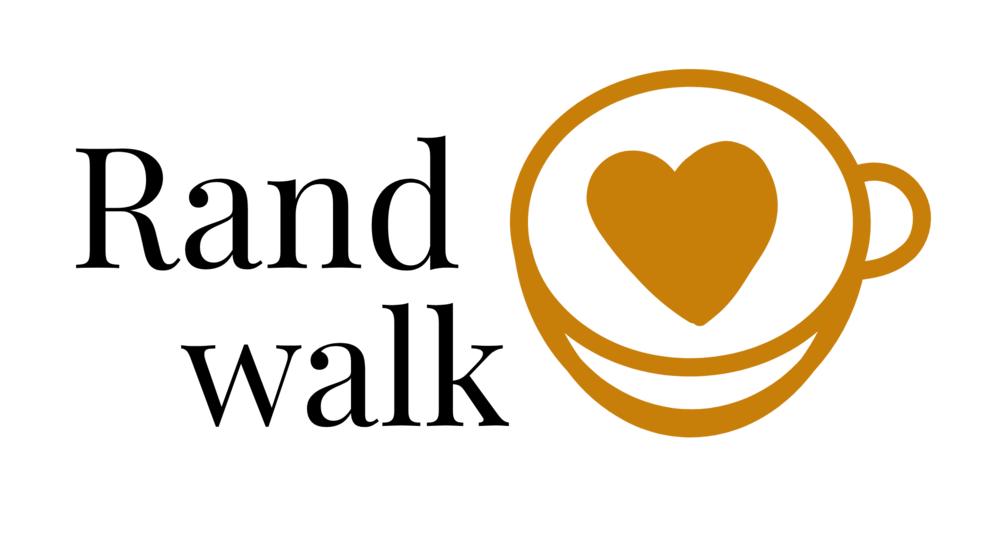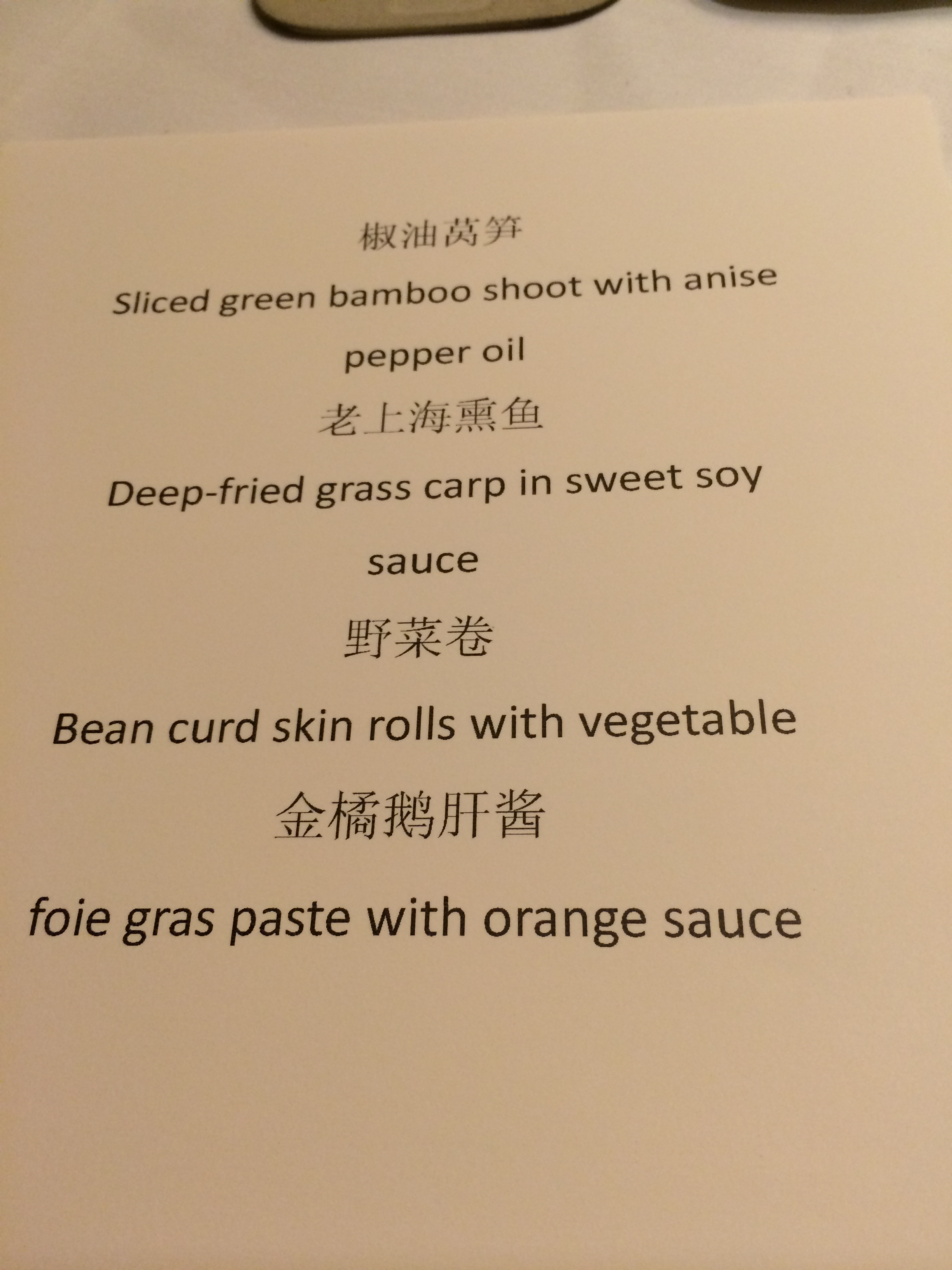The most worldly and modern city in China is also its loveliest. It feels like it is decades ahead of anywhere else on the mainland. It is clean, cultured, many times more polite. Perhaps it is the China of the future, or at least what other cities aspire to be. At times, you actually forget that you’re in China. Arriving from Pudong airport, you take a magnetic train that cruises up to 430km/hr called the Maglev line, made in collaboration with the Germans. At the Centre for Urban Planning (g: Shanghai Urban Planning Exhibition Center), a model of the city fills an entire floor. You’re spirited away in a 3D demonstration through the technological urban marvel. You can’t help but be reminded that this is modern day propaganda by the CCP, a modern day Magnitogorsk. But the propaganda is mostly accurate. The city is briskly modern. With the 21st century belonging to China, Shanghai represents things to come.
Shanghai First Food Store on Nanjing Rd.
The main geographical feature of Shanghai is the Huangpu River. Puxi, literally west of the river, is the old, storied remnants of old Shanghai, where you will find most of the things to do. On this side is the remarkable bund, with its beautiful European architecture – a throwback to colonial times. Pudong, east of the river, is pure science fiction, like its communist spire that acts as a television tower. Around it are beautiful hotels and office buildings. The bar at a the top of the Ritz Carlton is easy to get to by subway, is connected to the lofty IFC shopping centre and offers a magnificent view of the bund. The hotel itself offers a look into the nouveau riche who currently define modern day China. In one elevator ride, a rowdy group of young adults from the aforementioned class were dressed up for a night out. On the bund they congregate. One building seems to be the French destination of choice. There are two ultra-expensive clubs to serve them. Then, afterward, a French restaurant is open until 4am. It is also a Top 50 restaurant in Asia. It’s lovingly called Mr. and Mrs. Bund.
Cha's Restaurant
In China, the food capital is Shanghai. As a general rule, the food gets better as you travel south. Couple that with the international contingent of chefs and tastebuds and a major foodie city in Asia arises. For example, Cha’s Restaurant has better tea than most of the Hong Kong (~15 RMB, 2.62 CAD). The Iced Milk Tea is made with tea infused ice cubes and is so flavour-packed that it almost resembles an iced latte. The Iced Lemon Tea is similarly refreshing. Here, the main attraction is the smoked chicken - a simple dish of sliced skin-on chicken that turns out to be a juicy mouth-popping experience (~50 RMB, 8.74 CAD). Later at night, go to Mr. and Mrs. Bund for the most pretentious drunk food you can find. It’s one of Asia’s best restaurants in the French style. The late-night menu mirrors the lunch menu – 200 to 250 RMB for a set course. Begin with a mushroom arugula salad served table side, where the pungent flavours and smells of the mushrooms accentuate the peppery arugula. Next, have a tuna tartare, topped with a slimy mayo and the first fries I’ve had in a month. Finally, three slices of pomelo fruit - a drier, sweeter cousin of the grapefruit - dipped in a sweet sauce with rocket powder if you please.
Mr. and Mrs. Bund
Jiajiatangbao
Xiaolonbao and Shenjianbao
For breakfast, do the standard xiaolongbao - shanghai pork buns. People seem to call it tangbo here, which alludes to the soupy pork fat trapped in the bun. The xiaolongbao is a masterful piece of Chinese cuisine - a delicate yet tasty invention that the rest of the food struggles to live up to. There are many branches of the store that internationalized the pork bun - the famous Michelin starred Ding Tai Fung, but that’s a Taipei original so go to Taiwan for that. Instead, walk off of people’s square and have it at Jiajiatangbao (g: Jiajiatangbao or 90 Huanghe Road). The shop is a bit run down so you might want to take it over and eat it at Xiaoyangshenjian (the sign says “Yang”), where you can get the Shen Jian Bao - best described as the grandpa of the xiaolongbao: thicker skinned, rougher around the edges, and pops vehemently when bitten.
Jian Guo 328
An excellent lunch spot is Jian Guo 328 (g: Jian Guo 328 or 328 Jianguo West Rd). It’s a tiny, homey place that stays true southern Chinese cuisine. At this point, it’s clear that Shanghai is different. Even these small shops are tasteful and clean - a hard sight to find in the rest of China. The best thing here is actually its home-made iced tea - a similar concoction as the traditional lemon iced tea, but quite a bit sweeter and less lemony. Another treat is the sticky rice in dried date, a traditional dried fruit eaten in these parts. The sticky rice is a chewy paste to run through your teeth (~150 RMB for two).
FU1015
For some high-end dining, make a reservation at FU1015 (g: 福 1015 or 1015 Yu Yuan Lu), another top 50 restaurant with a minimum expenditure of 800RMB. We were put in a private room with a dedicated server and ensuite bathroom. The experience is quite special, starting when you walk into a mansion with no signs (it has a Casa-like feel). They suggest a tasting menu, though it’s essentially à la carte - the prices just need to add to more than 800 RMB. I would recommend requesting the menu and picking for yourself. For example, they gave us a sea cucumber - an ugly creature not for the faint of heart. It alone was 300RMB, and rather pointless. There were some memorable dishes - soy milk ice cream with crispy youtiao - a prescient mix of Chinese flavours in a western dessert. The black cod was a nice, oily contrast with the austere pieces of egg white. The cold dishes were interesting too - soy flavoured fried carp, a bamboo shoot with the consistency of cucumber, foie gras coated in orange. On the other hand, some of the dishes lacked inspiration, or sometimes common sense. A bowl of blueberries and cherries were plopped on a bed of ice. The roasted pork was like all the others I’ve had in China. And a weird stick of bread rested on a gargantuan prawn.
According to the Economist, China opened 451 new museums last year, versus 20-40 in America (http://www.economist.com/news/special-report/21591710-china-building-thousands-new-museums-how-will-it-fill-them-mad-about-museums). For the mainland, this is a relatively recent phenomenon and is the result of the pull towards anything Western. For although China has enough temples and palaces and national treasures to overwhelm even the most seasoned artifact-lover, its appreciation of art is limited. The pointless modern art museum in People’s Square features a weird display on a superhero named “Uterus Man” (http://vimeo.com/82164043) that attacks by shooting babies out of its feet. It stretches or perhaps forgets the definition of art. Much better is the Power Station of Art (g: Power Station of Art), a converted industrial building that has a Tate Modern feel to it. The carpet exhibition is cool, especially the beeping mosaic made of watches. Unfortunately, it has no permanent exhibition so it feels rather empty. In true PRC fashion, the museum seems to have forgotten to buy anything to put into the huge complex.
The main art museum has been rebranded as the China Art Museum and has relocated to the Chinese Pavilion from the Shanghai Biennial 2010 (Expo). The building was made show Shanghai off to the world (as the Olympics showed off Beijing in 2008). The result is a huge inverted pyramid that looks like a traditional Chinese crown. When it turned into an art museum, it automatically became the largest in Asia. The building itself is worth going to. Most of the floors are complete junk but the lowest level has a nice graphic description of modern Chinese history. A lot of it is propaganda, but that’s the reason to go. Another two famous museums to peruse if you have time are “the Aurora (a treasure trove of ancient bronzes and jades designed by Tadao Ando, a Japanese architect) and the Rockbund Art Museum (a thriving contemporary-art centre)” (The Economist).
For some history, go to the former residence of Sun Yat-sen (g: Sun Yat-sen former residence). It gives a colourful history of the man who introduced democracy to China. Interestingly enough, he was the premier of the Kuomintang, the Nationalist Party which the Communist party just derided at the China Art Museum. It’s close to Fuxing Park (g: Fuxing Park) so consider dropping by to see what senile Chinamen do in their spare time. But the one thing you cannot miss is the dating scene in the centre of People’s Park (g: People’s Park) where parents of singletons meet with white-haired grannies to search through catalogues of eligible, unmarried adults (a.k.a. Shanghai Marriage Market or People’s Park blind date corner; Saturday and Sunday from Noon to 5pm). On strings hang ‘advertisements’ specifying all the criteria these scrupulous shoppers are looking for – including zodiac sign. Photos can be requested. The whole experience is surreal. When you first see it, the advertisements look like notices for missing people.
Marriage Market, People's Park
Shanghai is a storied city of exceptional influence throughout its history. Its recent pre-eminence in the world is not so much a surprise but a continuation of its pre-Communist days. For years and years there was not a person in China that was not envious of the Shanghainese. It rose to world status when the Europeans carved it up, much like how Hong Kong grew under British ownership. It stuttered in communist years as trade waned and focus was placed on Beijing. But in the new economic revival, heads are turning, once again, to Shanghai.
Accessibility: China uses Chinese and most people speak Mandarin. English is not reliably used, though it is prevalent in some parts of the city. Non-native Mandarin speakers will find it difficult to comprehend the various accents and grammatical oddities from non-traditional speakers. Most Chinese signs are spelt out in Pingyin, the Romanization of Chinese. Google maps accept both English and Chinese words but some locations are only searchable by Chinese characters. See the google guides (“g:”) in the article. Furthermore, Google Maps may be blocked or might be slow in China. Hotspot Shield or another way to bypass the censor is essential. China Unicom and China Mobile offer sim cards but they are somewhat difficult to attain. Some phones only work with certain networks so research beforehand. Google translate is essential. Taxis are sometimes difficult to hail but generally reliable. They are inexpensive, just make sure you use the metered rate.






























